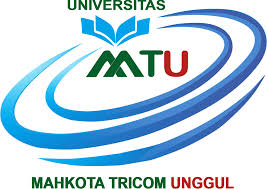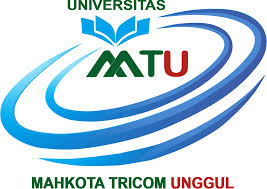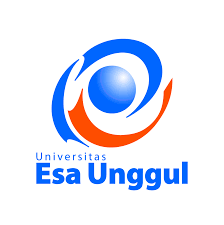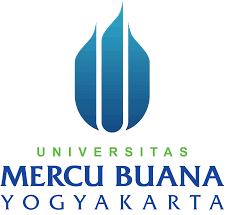Analysis of Children's Consumption Patterns Based on Cultural, Economic, Social and Food Access Factors in Karang Tumaritis Village, Nabire District, Central Papua
DOI:
https://doi.org/10.55927/fjst.v4i5.89Keywords:
Children's Consumption Patterns, Cultural, Economic, Social Factors, Food AccessAbstract
This research aims to analyze children's consumption patterns based on cultural, economic, social and food access factors in Karang Tumaritis Village, Nabire District. A qualitative method with a case study approach was used involving 24 informants selected through purposive sampling, consisting of health workers, community leaders and parents. Data collection was carried out through in-depth interviews, participant observation and documentation. The research results show that cultural factors influence preferences for traditional foods such as sweet potatoes, cassava and river fish, economic limitations cause low quality and less varied food choices, the influence of peers and the media encourages the consumption of unhealthy snacks, and dependence on markets and limited garden space become obstacles to food access. Then, the main challenges include lack of nutritional knowledge, economic limitations, and low parental attention. Therefore, improvement strategies include serving attractive foods and nutrition education. The research recommends strengthening nutrition education, using local food, and cross-sector synergy to improve children's healthy and sustainable consumption patterns.
References
Ajzen, I. (1991). The theory of planned behavior. Organizational Behavior and Human Decision Processes, 50(2), 179-211.
Amalia, R. (2021). Ketahanan pangan dan status gizi anak di pedesaan: Studi kasus di Distrik Nabire. Bandung: Penerbit Alfabeta.
Bandura, A. (1986). Social foundations of thought and action: A social cognitive theory. Englewood Cliffs, NJ: Prentice-Hall.
Barrett, C. B. (2010). Measuring food insecurity. Science, 327(5967), 825-828.
Birch, L. L., & Anzman, S. L. (2010). Learning to eat in an obesogenic environment: A developmental systems perspective on childhood obesity. Child Development Perspectives, 4(2), 138-143.
Birch, L. L., & Fisher, J. O. (1998). Development of eating behaviors among children and adolescents. Pediatrics, 101(Supplement 2), 539-549.
Black, R. E., Victora, C. G., Walker, S. P., Bhutta, Z. A., Christian, P., de Onis, M., Ezzati, M., Grantham-McGregor, S., Katz, J., Martorell, R., & Uauy, R. (2013). Maternal and child undernutrition and overweight in low-income and middle-income countries. The Lancet, 382(9890), 427-451.
BPS. (2023). Data statistik kesehatan dan gizi Kabupaten Nabire. Nabire: Badan Pusat Statistik.
Bronfenbrenner, U. (1979). The ecology of human development: Experiments by nature and design. Cambridge, MA: Harvard University Press.
Coleman-Jensen, A., Rabbitt, M. P., Gregory, C. A., & Singh, A. (2016). Household food security in the United States in 2015. USDA Economic Research Report No. 215.
Contento, I. R. (2016). Nutrition education: Linking research, theory, and practice (3rd ed.). Burlington, MA: Jones & Bartlett Learning.
Dewi, A., Permana, R., & Sutrisno, B. (2023). Pengaruh media sosial terhadap kebiasaan makan anak usia sekolah di Kota Denpasar. Jurnal Kesehatan Masyarakat Indonesia, 15(2), 78-89.
Dinkes Kab. Nabire. (2024). Laporan tahunan Dinas Kesehatan Kabupaten Nabire Tahun 2024. Nabire: Dinas Kesehatan Kabupaten Nabire.
Drewnowski, A., Darmon, N., & Briend, A. (2010). The economics of food choice behavior: A psychobiological perspective. Physiology & Behavior, 97(1), 27-31.
Eka, C., Mulyana, B., & Prasetyo, D. (2024). Prevalensi stunting dan pola makan balita di wilayah kerja Puskesmas Karang Tumaritis. Jurnal Gizi dan Kesehatan Masyarakat, 12(1), 45-58.
FAO. (2017). The state of food security and nutrition in the world 2017. Rome: Food and Agriculture Organization of the United Nations.
Fauziah, L., & Salim, M. (2024). Pola pengasuhan dan risiko kekurangan gizi kronis pada anak di Kota Sorong. Jurnal Kesehatan Papua, 8(1), 12-24.
Hapsari, D., Wibowo, T., & Pratiwi, R. (2022). Efektivitas penyajian makanan kreatif terhadap konsumsi sayuran pada anak usia dini di Kota Malang. Jurnal Ilmu Gizi Indonesia, 14(2), 123-135.
Herawati, M. (2020). Pola konsumsi anak dan dampaknya terhadap status gizi di Indonesia. Jakarta: Penerbit Universitas Indonesia.
Indriani, R. (2020). Akses dan ketersediaan pangan bergizi di wilayah pedesaan: Studi kasus di Distrik Nabire. Yogyakarta: Penerbit Gadjah Mada University Press.
Lin, B. H., Smith, T. A., & Morrison, R. M. (2012). Food consumption patterns and economic factors: Analysis from the USDA's Economic Research Service. Journal of Economic Research, 22(3), 13-17.
Marmot, M., & Wilkinson, R. G. (Eds.). (2006). Social determinants of health (2nd ed.). Oxford: Oxford University Press.
Marlina, S., Agustina, T., & Pratama, R. (2022). Literasi gizi ibu dan implikasinya terhadap status gizi anak di Kabupaten Sigi. Jurnal Gizi Klinik Indonesia, 18(4), 235-247.
Maulida, H., & Karsono, F. (2024). Efektivitas program edukasi gizi berbasis komunitas di wilayah pesisir utara Jawa. Jurnal Promosi Kesehatan Indonesia, 19(1), 56-68.
Mulyani, N., Saputra, W., & Handayani, L. (2022). Pengaruh kepercayaan tradisional terhadap pola konsumsi anak di Kabupaten Ende. Jurnal Antropologi Indonesia, 43(1), 67-79.
Nuraini, S., & Hasan, Z. (2022). Model koordinasi lintas sektor dalam program gizi anak di Yogyakarta. Jurnal Administrasi Kesehatan Indonesia, 10(2), 112-124.
Nurlaela, D., & Siregar, P. (2022). Ketahanan pangan rumah tangga miskin di kawasan urban Jakarta. Jurnal Gizi dan Pangan, 17(1), 23-36.
Oktarina, R., Setiawan, B., & Mulyana, D. (2023). Evaluasi program gizi puskesmas di Kabupaten Karawang. Jurnal Kebijakan Kesehatan Indonesia, 12(3), 145-157.
Patrick, H., & Nicklas, T. A. (2005). A review of family and social determinants of children's eating patterns and diet quality. Journal of the American College of Nutrition, 24(2), 83-92.
Prasetya, H., & Oktaviani, W. (2022). Pengaruh teman sebaya terhadap pemilihan makanan anak sekolah di Kabupaten Sleman. Jurnal Keperawatan Indonesia, 25(2), 89-101.
Puspitasari, L., & Wulandari, D. (2023). Pola konsumsi pangan lokal pada anak di pedalaman Kalimantan Tengah. Jurnal Ekologi Kesehatan, 22(1), 45-58.
Rachmawati, E., Nugroho, S., & Pertiwi, K. (2023). Ketahanan pangan rumah tangga dan status gizi anak di wilayah perdesaan Sulawesi Tengah. Jurnal Gizi Indonesia, 11(2), 156-168.
Rahmadani, R. A. (2023). Pengaruh faktor ekonomi terhadap pola konsumsi pangan dan status gizi keluarga di Indonesia. Yogyakarta: Penerbit Gadjah Mada University Press.
Rahmawati, F., Gunawan, A., & Santoso, H. (2024). Preferensi makanan tradisional pada anak di Papua Barat: Perspektif budaya. Jurnal Antropologi Papua, 6(1), 34-46.
Ramadhani, K., Purwanto, B., & Larasati, T. (2024). Strategi peningkatan konsumsi pangan anak di Kabupaten Fakfak. Jurnal Kesehatan Masyarakat Papua, 9(1), 45-57.
Rohman, A. (2019). Pendidikan gizi dalam meningkatkan kesadaran masyarakat terhadap pola konsumsi sehat. Jakarta: Penerbit Erlangga.
Rosenstock, I. M. (1974). Historical origins of the health belief model. Health Education Monographs, 2(4), 328-335.
Sari, A. (2018). Pengaruh budaya terhadap pola konsumsi makanan masyarakat di Indonesia. Jakarta: Penerbit Universitas Indonesia.
SKI. (2021). Survei Kesehatan Indonesia 2021. Jakarta: Kementerian Kesehatan RI.
Story, M., Kaphingst, K. M., Robinson-O'Brien, R., & Glanz, K. (2008). Creating healthy food and eating environments: Policy and environmental approaches. Annual Review of Public Health, 29, 253-272.
Supriyadi, F., Wijaya, A., & Nugroho, P. (2024). Keberagaman pangan rumah tangga di wilayah pedalaman Papua. Jurnal Gizi Klinik Indonesia, 20(1), 12-24.
Susanto, M., & Liana, P. (2023). Hubungan tingkat pendidikan ibu dengan pola pemberian makan anak di Bekasi. Jurnal Kebidanan dan Keperawatan, 19(2), 113-125.
Thaler, R. H., & Sunstein, C. R. (2008). Nudge: Improving decisions about health, wealth, and happiness. New Haven, CT: Yale University Press.
Turner, C., Aggarwal, A., Walls, H., Herforth, A., Drewnowski, A., Coates, J., Kalamatianou, S., & Kadiyala, S. (2018). Concepts and critical perspectives for food environment research: A global framework with implications for action in low- and middle-income countries. Global Food Security, 18, 93-101.
WHO. (2014). Global nutrition targets 2025: Stunting policy brief. Geneva: World Health Organization.
Widyastuti, E., & Azhar, M. (2023). Efektivitas frequent feeding dalam meningkatkan asupan nutrisi balita picky eater di Kabupaten Banjarnegara. Jurnal Kesehatan Ibu dan Anak, 15(1), 67-79.
Wulandari, S., & Setiawan, A. (2024). Perkembangan preferensi makan anak usia dini: Studi etnografi di Yogyakarta. Jurnal Psikologi Anak, 7(1), 34
Downloads
Published
Issue
Section
License
Copyright (c) 2025 Ishaq Pawennari, Rosmin M. Tingginehe, Novita Mediati, Semuel P. Irab, Arius Togodly, Sarce Makaba

This work is licensed under a Creative Commons Attribution 4.0 International License.


































